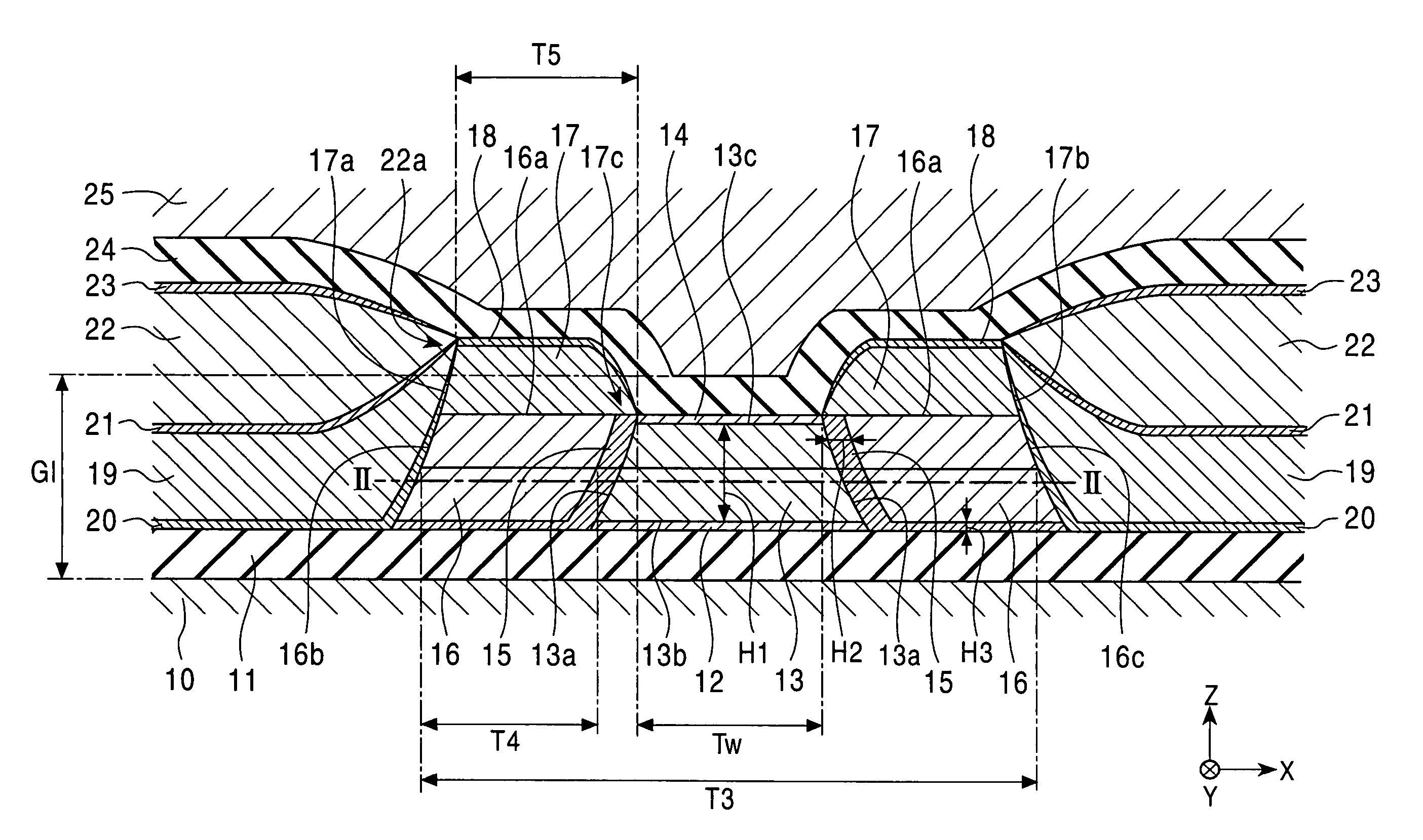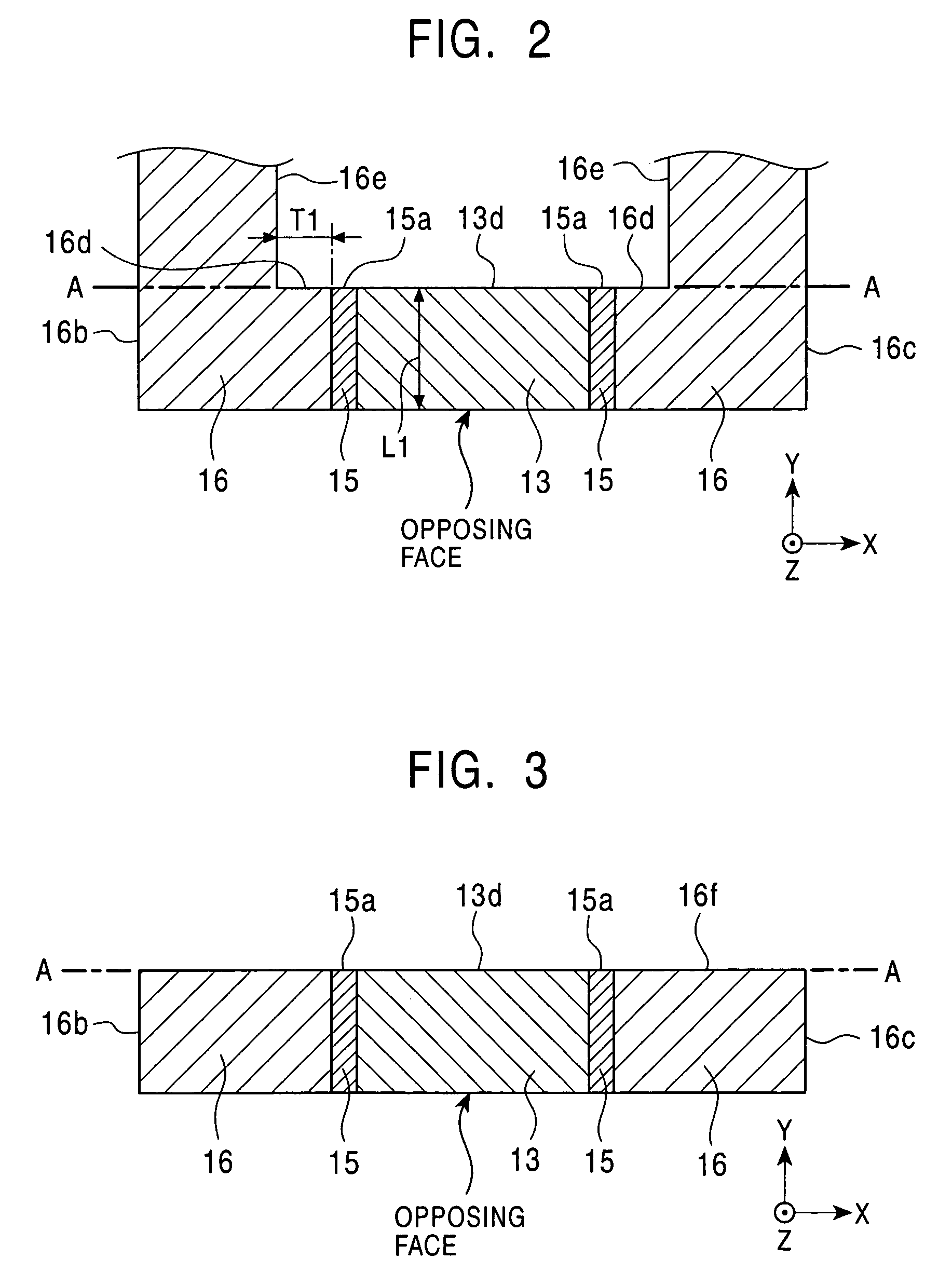High read output, high sensitivity magnetic sensing element
a high-sensitivity, magnetic sensing element technology, applied in the field of magnetic sensing elements, can solve the problems of degradation of read characteristics, limited area of composite surface, increased gap length, etc., and achieve the effect of easy optimization of the distance between the free magnetic layer and the antiferromagnetic layer for controlling the magnetization direction of the free magnetic layer
- Summary
- Abstract
- Description
- Claims
- Application Information
AI Technical Summary
Benefits of technology
Problems solved by technology
Method used
Image
Examples
Embodiment Construction
[0045]FIG. 1 is a cross-sectional view of a magnetic sensing element according to a first embodiment of the present invention viewed from a face of the magnetic sensing element opposing a recording medium (hereinafter, this face is referred to as the “opposing face”). The cross-sectional view is taken parallel to the opposing face.
[0046]The magnetic sensing element shown in FIG. 1 is a giant magnetoresistive (GMR) head for reading an external signal recorded on a recording medium. An inductive writing head may be disposed on the magnetic sensing element, although this is not shown in the drawing.
[0047]In the following description, surfaces of the layers constituting the magnetic sensing element lie in the X-Y plane as defined in each of the drawings. The term “track width direction” refers to a direction parallel to the X direction. The width of a region having magnetization that changes in response to an external magnetic field coincides with this “track width direction”. For examp...
PUM
 Login to View More
Login to View More Abstract
Description
Claims
Application Information
 Login to View More
Login to View More - R&D
- Intellectual Property
- Life Sciences
- Materials
- Tech Scout
- Unparalleled Data Quality
- Higher Quality Content
- 60% Fewer Hallucinations
Browse by: Latest US Patents, China's latest patents, Technical Efficacy Thesaurus, Application Domain, Technology Topic, Popular Technical Reports.
© 2025 PatSnap. All rights reserved.Legal|Privacy policy|Modern Slavery Act Transparency Statement|Sitemap|About US| Contact US: help@patsnap.com



